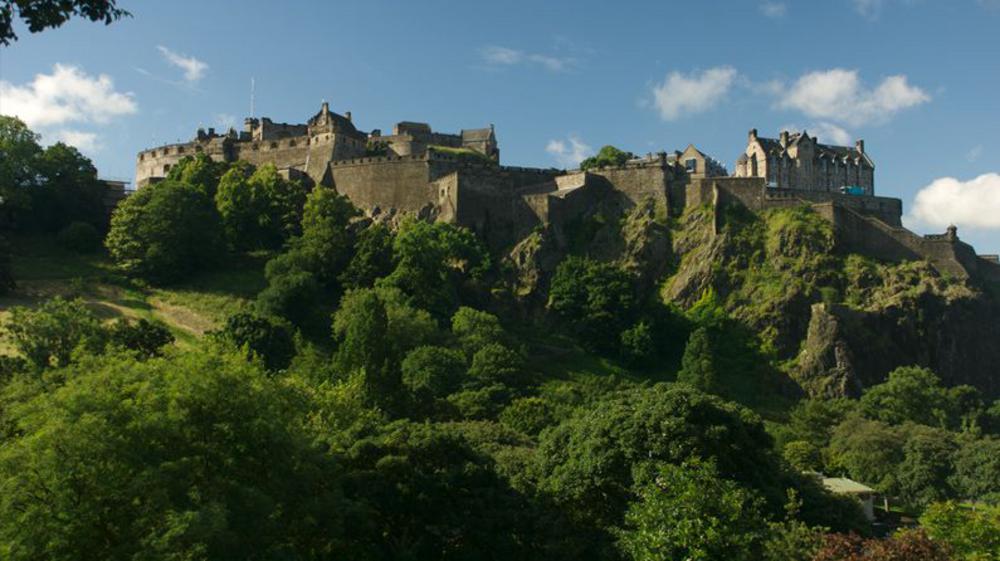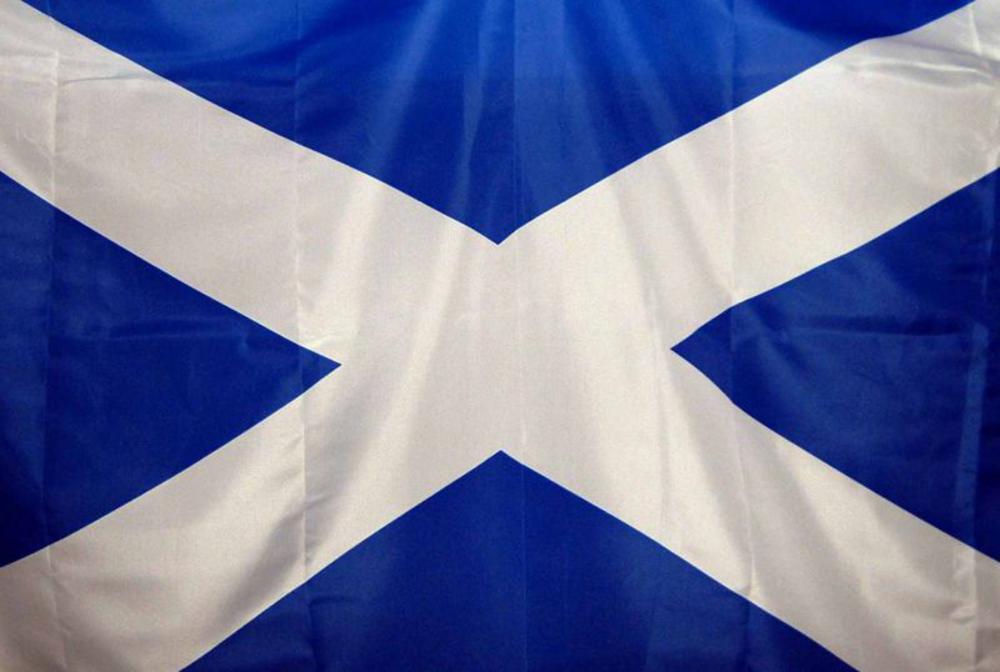Ceilidhs test the floorboards of many village halls from Gretna Green to Lerwick on 30th November. In the town that bears the saint's name, St Andrews, there's a week-long festival of arts and activities. And since November 30th 1996, when the Stone of Destiny was returned to Scotland and housed in Edinburgh Castle it has been decreed that the Castle shall be open with free entry on every St Andrew's Day - in perpetuity - to allow the people of Scotland to view the fabled Stone.

St Andrews Festival begins with the first professional performance of Macpherson’s Rant. The Festival will culminate with a spectacular selection of events over the St Andrews weekend, including a Gala Dinner, Fife Young Fiddlers, John Knox’s Pulpit, Torchlight Parade, Fireworks Display, an outdoor Ceilidh, Scottish Concert, Scottish Community Drama productions and a Food Festival.
In Glasgow enjoy a Scottish-themed extravaganza with a traditional ceilidh, live music, family fun, street theatre, story telling, films and lots more. The Winter Café Bar will be offering a scrumptious Scottish menu featuring haggis, neeps 'n' tatties; scotch broth; Aberdeen Angus burgers; hot toddies and a selection of Scottish Ales to wash down this delicious fodder!
Edinburgh Castle plays host to the St Andrews Day Night Time Spectacular, which aims to bring an exuberant and youthful flavour to this traditional celebration with an amazing Scottish carnival of contemporary dance, light show, fireworks and a unique twist on the sound of pipes and drums all performed on the esplanade of Edinburgh's iconic landmark building.
Haggis, whisky and oats will be consumed in large quantities and many of the Scots will cudgel their brains to remember their primary school lessons in Scottish country dancing and persuade everyone to join in at a ceilidh.
Around midnight on November 29, it was traditional for girls to pray to St Andrew for a husband. They would make a wish and look for a sign that they had been heard.
A girl wishing to marry could:
Throw a shoe at a door. If the toe of the shoe pointed in the direction of the exit, then she would marry and leave her parents house within a year.
Peel a whole apple without breaking the peel and throw the peel over the shoulder. If the peel formed a letter of the alphabet, then this suggested the name of her future groom.
German folklore advises single women who wish to marry to ask for St Andrews help. The night before the 30th, if they sleep naked, they will see their future husbands in their dreams. Young women should also note the location of barking dogs on St Andrews Eve, as their future husbands will come from that direction.
St Andrew is also expected to look after gout, singers, sore throats, stiff necks, unmarried women, women who wish to become mothers, fish dealers, fishmongers, fishermen, old maids and more!
St Andrew was one of Jesus Christ's apostles; he is thought to have been a fisherman along with his elder brother Saint Peter. The patron saint of Scotland, Greece, Romania and Russia, Andrew was reputedly put to death by the Romans in Greece by being pinned to a diagonal cross which is said to be the basis of the Saltire (also known as the cross of St Andrew). His connection with Scotland is from the relics that were placed in a chapel, in (you guessed it!) St Andrew's. Although there are a great many stories, there is no definitive answer as to how they came to be in Scotland, the most common is that St Rule (or Regulus) had a dream the relics were to be destroyed and stole away with some, being shipwrecked in Fife on the way. The relics vanished in the Scottish Reformation period as churches were expunged of "Catholic idolatry". The larger part of St. Andrew's remains were stolen from Constantinople in 1210 and are now to be found in Amalfi in Southern Italy. In 1879 the Archbishop of Amalfi sent a small piece of the Saint's shoulder blade to the re-established Roman Catholic community in Scotland. Since 2007 it has been a designated bank holiday in Scotland (albeit one in which the banks don't close, and employers don't have an obligation to give their employees an additional day off). It is also an official flag day, meaning that the Saltire is flown on all government buildings (except for Edinburgh Castle and other British Army leased buildings which continue to fly the Union Flag).
